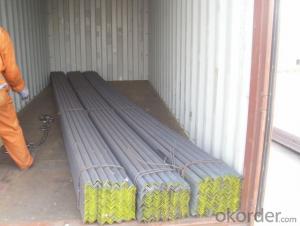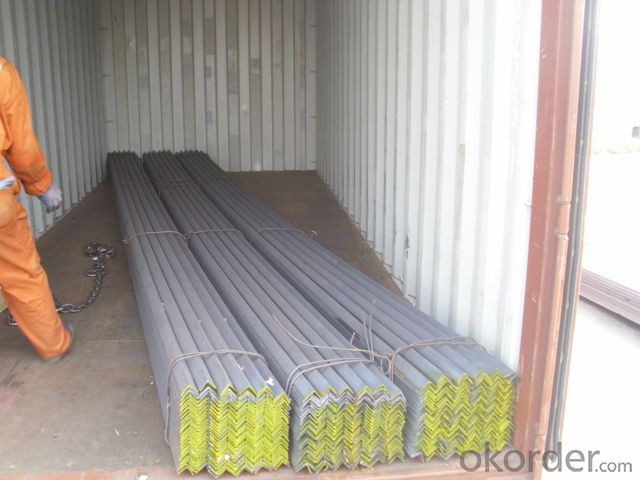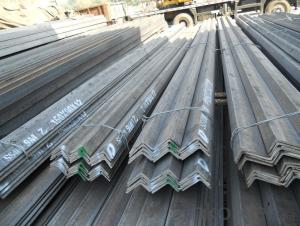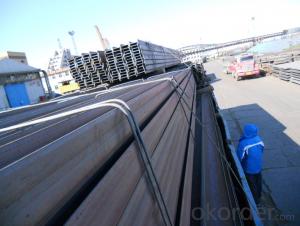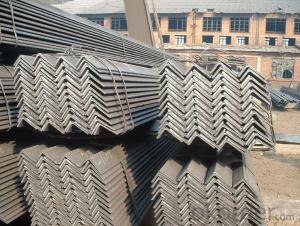High Quality Cold Rolled Steel Unequal Angle for Construction
- Loading Port:
- China main port
- Payment Terms:
- TT OR LC
- Min Order Qty:
- 25000 m.t.
- Supply Capability:
- 2000000 m.t./month
OKorder Service Pledge
OKorder Financial Service
You Might Also Like
Specification
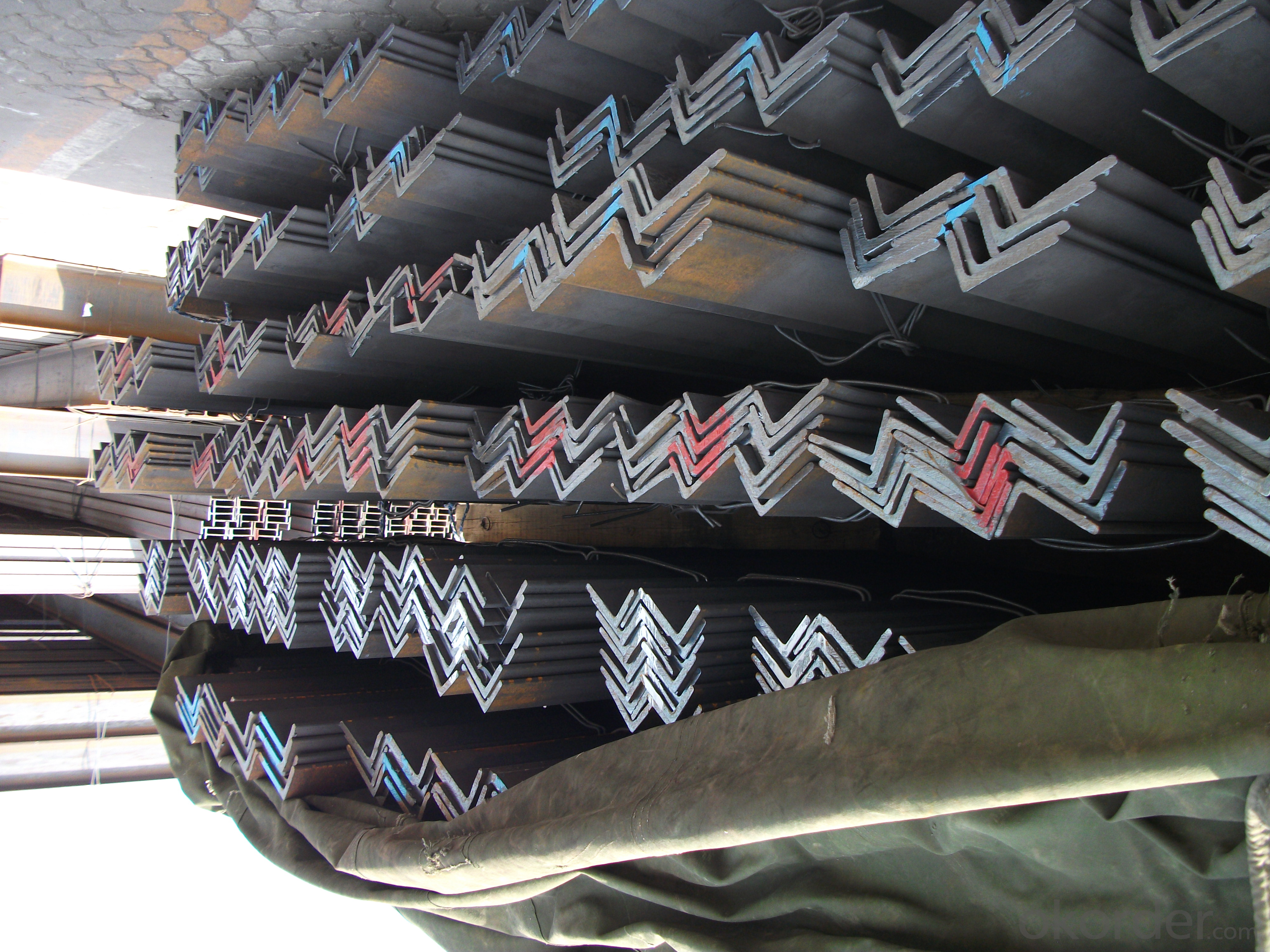 Product Description:
Product Description:
OKorder is offering High Quality Cold Rolled Steel Unequal Angle for Construction at great prices with worldwide shipping. Our supplier is a world-class manufacturer of steel, with our products utilized the world over. OKorder annually supplies products to European, North American and Asian markets. We provide quotations within 24 hours of receiving an inquiry and guarantee competitive prices.
Product Applications:
High Quality Cold Rolled Steel Unequal Angle for Construction are ideal for structural applications and are widely used in the construction of buildings and bridges, and the manufacturing, petrochemical, and transportation industries.
Product Advantages:
OKorder's High Quality Cold Rolled Steel Unequal Angle for Construction are durable, strong, and resist corrosion. They are newly produeced by good materiales.
Main Product Features:
· Premium quality
· Prompt delivery & seaworthy packing (30 days after receiving deposit)
· Corrosion resistance
· Can be recycled and reused
· Mill test certification
· Professional Service
· Competitive pricing
Product Specifications:
Specifications of High Quality Cold Rolled Steel Unequal Angle for Construction
1. Invoicing on theoretical weight or actual weight as customer request
2. Length: 6m, 9m, 12m as following table
3. Sizes
Sizes: 25mm-250mm | ||
a*t | ||
25*2.5-4.0 | 70*6.0-9.0 | 130*9.0-15 |
30*2.5-6.6 | 75*6.0-9.0 | 140*10-14 |
36*3.0-5.0 | 80*5.0-10 | 150*10-20 |
38*2.3-6.0 | 90*7.0-10 | 160*10-16 |
40*3.0-5.0 | 100*6.0-12 | 175*12-15 |
45*4.0-6.0 | 110*8.0-10 | 180*12-18 |
50*4.0-6.0 | 120*6.0-15 | 200*14-25 |
60*4.0-8.0 | 125*8.0-14 | 250*25 |
5. Payment terms:
1).100% irrevocable L/C at sight.
2).30% T/T prepaid and the balance against the copy of B/L.
3).30% T/T prepaid and the balance against L/C
6.Material details:
Alloy No | Grade | Element (%) | |||||
C | Mn | S | P | Si | |||
Q235 | B | 0.12—0.20 | 0.3—0.7 | ≤0.045 | ≤0.045 | ≤0.3 | |
Alloy No | Grade | Yielding strength point( Mpa) | |||||
Thickness (mm) | |||||||
≤16 | >16--40 | >40--60 | >60--100 | ||||
≥ | |||||||
Q235 | B | 235 | 225 | 215 | 205 | ||
Alloy No | Grade | Tensile strength (Mpa) | Elongation after fracture (%) | ||||
Thickness (mm) | |||||||
≤16 | >16--40 | >40--60 | >60--100 | ||||
≥ | |||||||
Q235 | B | 375--500 | 26 | 25 | 24 | 23 | |
Usage & Applications of High Quality Hot Rolled Steel Unequal Angle Equal Angle for Construction
According to the needs of different structures, Angle can compose to different force support component, and also can be the connections between components. It is widely used in various building structures and engineering structures such as roof beams, bridges, transmission towers, hoisting machinery and transport machinery, ships, industrial furnaces, reaction tower, container frame and warehouse etc.
Packaging & Delivery of High Quality Cold Rolled Steel Unequal Angle for Construction
1. Packing: it is nude packed in bundles by steel wire rod
2. Bundle weight: not more than 3.5MT for bulk vessel; less than 3 MT for container load
3. Marks:
Color marking: There will be color marking on both end of the bundle for the cargo delivered by bulk vessel. That makes it easily to distinguish at the destination port.
Tag mark: there will be tag mark tied up on the bundles. The information usually including supplier logo and name, product name, made in China, shipping marks and other information request by the customer.
If loading by container the marking is not needed, but we will prepare it as customer request.
Production flow ofHigh Quality Cold Rolled Steel Unequal Angle for Construction
Material prepare (billet) —heat up—rough rolling—precision rolling—cooling—packing—storage and transportation
FAQ:
Q1: Why buy Materials & Equipment from OKorder.com?
A1: All products offered byOKorder.com are carefully selected from China's most reliable manufacturing enterprises. Through its ISO certifications, OKorder.com adheres to the highest standards and a commitment to supply chain safety and customer satisfaction.
Q2: How do we guarantee the quality of our products?
A2: We have established an advanced quality management system which conducts strict quality tests at every step, from raw materials to the final product. At the same time, we provide extensive follow-up service assurances as required.
Q3: How soon can we receive the product after purchase?
A3: Within three days of placing an order, we will begin production. The specific shipping date is dependent upon international and government factors, but is typically 7 to 10 workdays.
Images:
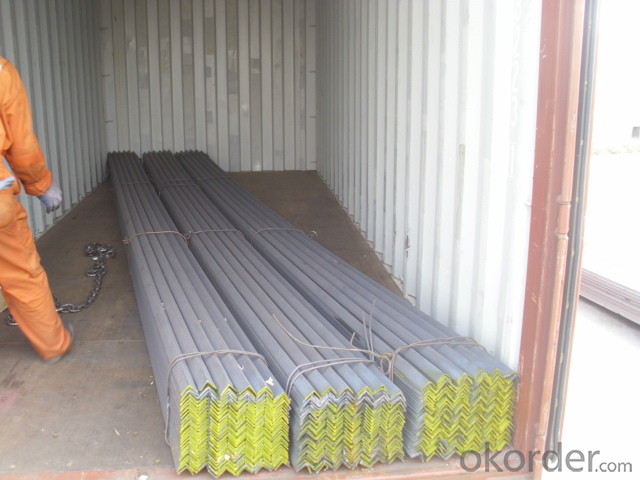

- Q: Can steel angles be used for framing in residential construction?
- Yes, steel angles can be used for framing in residential construction. Steel angles are commonly used as structural elements in construction due to their strength and durability. They can be used to provide support and stability in various framing applications such as wall framing, roof trusses, and floor joists. Steel angles offer several advantages in residential construction, including their resistance to warping, shrinking, and rotting, making them a reliable choice for framing. Additionally, steel angles are fire-resistant, which adds an extra layer of safety in residential buildings. Overall, steel angles are a versatile and cost-effective option for framing in residential construction projects.
- Q: Can steel angles be used for modular furniture or fixtures?
- Yes, steel angles can definitely be used for modular furniture or fixtures. Steel angles are versatile and strong structural components that can be easily incorporated into modular furniture designs. They provide stability and support to the overall structure, making them ideal for creating modular pieces that are sturdy and durable. Steel angles can be used as corner brackets or supports for shelves, cabinets, or other modular components. They can be easily cut, welded, or drilled to fit specific design requirements, allowing for flexibility in creating different configurations or sizes of modular furniture. Additionally, steel angles can be powder coated or painted in different colors to match the desired aesthetic of the furniture or fixtures. The use of steel angles in modular furniture or fixtures also ensures longevity, as they are resistant to wear and tear, corrosion, and impact. This makes them suitable for both indoor and outdoor applications. Moreover, steel angles are readily available and cost-effective, making them a practical choice for modular furniture or fixture manufacturing. In conclusion, steel angles are an excellent choice for creating modular furniture or fixtures due to their strength, versatility, and durability. They provide stability and support to the structure, can be easily customized, and offer long-lasting performance. Whether it is for residential or commercial use, steel angles can be utilized to create modular furniture or fixtures that are both functional and aesthetically pleasing.
- Q: Can steel angles be cut to size?
- Yes, steel angles can be cut to size using various cutting tools and techniques such as sawing, shearing, or plasma cutting.
- Q: How do you prevent steel angles from sagging?
- To avoid sagging in steel angles, there are several steps that can be taken: 1. Correct design: It is important to ensure that the steel angles are designed and sized appropriately for the load they will bear. This involves considering factors such as the span length, applied load, and material strength. Seeking advice from a structural engineer can help determine the right size and thickness for the steel angles. 2. Ample support: Providing sufficient support for the steel angles at regular intervals along their length is crucial. This can be achieved by using intermediate supports like columns, beams, or braces. The spacing of these supports should be determined based on the load and the properties of the steel angles. 3. Reinforcement: Depending on the load requirements, additional reinforcements can be added to the steel angles. This may involve incorporating stiffeners, gussets, or flanges to enhance their load-carrying capacity and resistance to sagging. 4. High-quality fabrication: It is essential to ensure that the steel angles are fabricated in accordance with industry standards and specifications. This includes employing proper welding techniques, precise cutting, and appropriate surface preparation to avoid weak points or defects that could contribute to sagging. 5. Regular inspection and maintenance: Regularly inspecting the steel angles is necessary to identify any signs of sagging or structural issues. This can involve visual inspections, measurements, and non-destructive testing methods. Addressing any identified problems promptly is crucial to prevent further deformation and ensure the long-term integrity of the steel angles. By implementing these preventive measures, steel angles can effectively be safeguarded against sagging and maintain their structural stability over time.
- Q: How are steel angles made?
- The production of steel angles involves a process known as hot rolling, where steel angles are created. The process begins by heating a large steel billet in a furnace at extremely high temperatures until it becomes malleable. Subsequently, the heated billet is passed through a series of rollers that shape it into the desired angle profile. These rollers possess grooves that correspond to the desired angle dimensions, allowing the steel to gradually take on the shape of an angle. As the steel billet is fed through the rollers, it undergoes compression and elongation, resulting in a longer and thinner piece of steel with the desired angle shape. This process serves to enhance the mechanical properties of the steel, increasing its strength and durability. Once the steel angle has been formed, it proceeds through a cooling process to stabilize its shape and prevent any deformations. Subsequently, it is cut to the necessary length and undergoes various finishing processes, such as straightening, surface treatment, and inspection, to ensure its quality and dimensional accuracy. In summary, the production of steel angles encompasses a series of processes, including heating, rolling, cooling, cutting, and finishing. These processes are meticulously designed to manufacture high-quality steel angles with precise shapes, suitable for a wide range of construction and manufacturing applications.
- Q: Can steel angles be easily cut to size?
- Yes, steel angles can be easily cut to size using various tools such as saws or plasma cutters.
- Q: Can steel angles be used in the construction of oil refineries?
- Yes, steel angles can be used in the construction of oil refineries. Steel angles are commonly used in construction projects due to their high strength and durability. They provide structural support and are suitable for various applications, including the construction of oil refineries. The angles can be used to create frameworks, supports, and bracing for different components and equipment within the refinery. They offer stability and resistance to heavy loads and harsh environments, which is essential in the oil refining industry. Additionally, steel angles can be easily welded, bolted, or connected to other steel members, making them a versatile choice for refinery construction.
- Q: What are the common surface treatments for steel angles?
- There are several common surface treatments for steel angles, depending on the desired application and level of corrosion resistance required. Some of the most common surface treatments include: 1. Hot-dip galvanizing: This process involves immersing the steel angles in a bath of molten zinc, which forms a protective layer on the surface. Hot-dip galvanizing provides excellent corrosion resistance and is commonly used in outdoor applications. 2. Powder coating: Powder coating involves applying a dry powder to the surface of the steel angles, which is then cured under heat to form a protective and decorative coating. Powder coating is highly durable and provides good corrosion resistance, making it suitable for both indoor and outdoor applications. 3. Paint: Painting steel angles is a cost-effective and versatile surface treatment option. The steel angles are typically primed with a rust-inhibiting primer and then painted with a suitable topcoat. Paint provides a decorative finish and some level of corrosion resistance, although it may not be as long-lasting as other treatments. 4. Electroplating: Electroplating is a process where a thin layer of metal, such as zinc or chrome, is deposited onto the surface of the steel angles using an electric current. This treatment provides both corrosion resistance and aesthetic appeal, making it suitable for various applications. 5. Anodizing: Anodizing is typically used for aluminum, but it can also be applied to steel angles. This process involves creating an oxide layer on the surface of the metal, which provides corrosion resistance and improved durability. Anodizing can also provide a decorative finish and is commonly used in architectural applications. It's important to note that the choice of surface treatment for steel angles depends on factors such as the intended use, budget, and environmental conditions. Consulting with professionals or experts in the field can help determine the most suitable surface treatment for a specific application.
- Q: Can steel angles be used in temporary or modular structures?
- Yes, steel angles can be used in temporary or modular structures. Steel angles are commonly used in construction due to their strength, versatility, and cost-effectiveness. They are often used to provide structural support and stability in various applications, including temporary or modular structures. Steel angles can be easily cut, welded, and bolted, making them suitable for assembling and disassembling temporary or modular structures. Additionally, steel angles can withstand heavy loads and provide excellent resistance against bending and twisting forces, ensuring the stability and safety of the structure.
- Q: Can steel angles be used for underground or subterranean structures?
- Yes, steel angles can be used for underground or subterranean structures. Steel angles are versatile and commonly used in construction due to their strength, durability, and ability to withstand high levels of stress. In underground or subterranean structures, steel angles can be used for a variety of purposes such as providing structural support, reinforcing concrete walls or floors, or creating framing systems. They can also be used for retaining walls, tunnel linings, underground parking structures, or underground utility tunnels. The corrosion resistance of steel angles can be enhanced through various coatings or treatments, making them suitable for underground environments where moisture, soil, or other corrosive elements may be present. Overall, steel angles are a reliable and effective choice for underground or subterranean structures due to their strength, adaptability, and resistance to various environmental factors.
Send your message to us
High Quality Cold Rolled Steel Unequal Angle for Construction
- Loading Port:
- China main port
- Payment Terms:
- TT OR LC
- Min Order Qty:
- 25000 m.t.
- Supply Capability:
- 2000000 m.t./month
OKorder Service Pledge
OKorder Financial Service
Similar products
Hot products
Hot Searches
Related keywords
